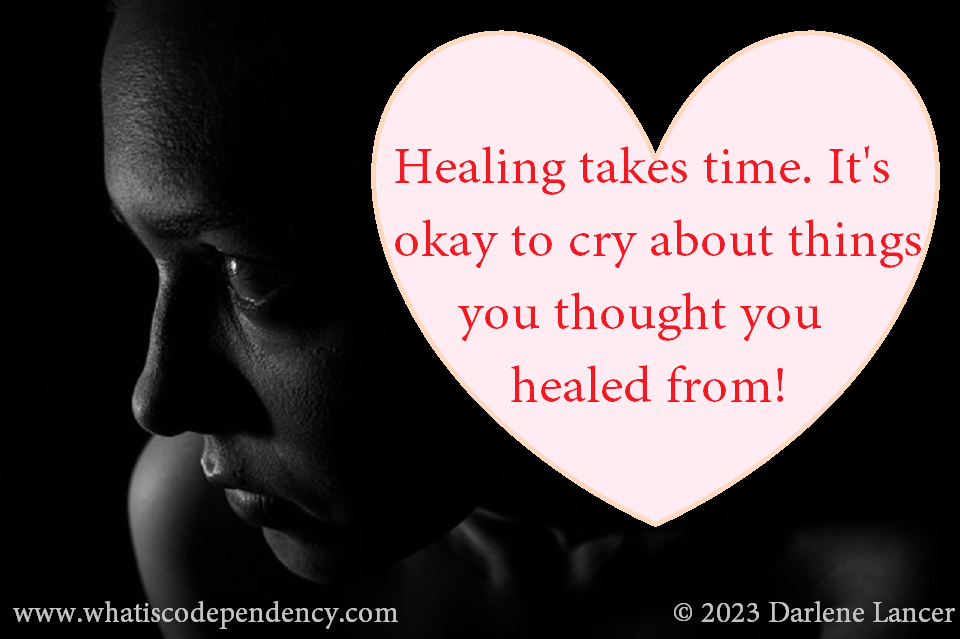 The conversation around trauma has become mainstream, as people seek to understand the effects of stress and emotional wounding on the body and mind. Countless books and studies have brought vital insights, exploring how trauma lodges in the nervous system and impacts our sense of safety, connection, and vitality. But amid all this knowledge, it’s easy to miss something essential: We’ve inherited natural trauma healing practices.
The conversation around trauma has become mainstream, as people seek to understand the effects of stress and emotional wounding on the body and mind. Countless books and studies have brought vital insights, exploring how trauma lodges in the nervous system and impacts our sense of safety, connection, and vitality. But amid all this knowledge, it’s easy to miss something essential: We’ve inherited natural trauma healing practices.
Trauma affects codependents, including anyone who has lived with abuse, addiction, and high-conflict relationships. It’s often transgenerational.
For millennia, human beings have endured hardship, danger, and loss. Before psychology, before neuroscience, before talk therapy, people survived. Not only did they survive, but they developed sophisticated, embodied ways of processing and releasing the impact of traumatic events. These ancient methods—shaking, sleeping, holding one another, and storytelling—are encoded in our biology. They arise not from textbooks, but from the wisdom of the body and the rhythm of nature.
Much of this ancient intelligence is echoed in the work of trauma researcher Peter Levine, whose approach, Somatic Experiencing, is grounded in the study of how animals respond to threat. Levine noticed that wild animals, once safe from danger, shake or tremble to release survival energy. Humans, too, have this capacity—but often suppress it. His work shows that by allowing these natural responses to unfold, the body can discharge traumatic energy and restore equilibrium.
In traditional and indigenous cultures, trauma wasn’t pathologized. It was recognized, witnessed, and met with communal rituals and practices that allowed the nervous system to complete its cycle. When a threat passed, people danced. They cried. They shook. They sat in circles and spoke their truths. They were held by others who had also suffered and survived. The healing didn’t require diagnoses or labels. It requires time, presence, and trust in the body’s ability to come back into balance.
Modern life has largely stripped us of our connection to natural trauma healing. Especially in cities, the nervous system is bombarded with constant stimuli: sirens, screens, deadlines, alerts, noise. We have created environments that mirror the physiology of an emergency. And then we wonder why trauma seems so pervasive. It’s not only the major life events that damage us; it’s the chronic inability to reset, to pause, and to return to safety.
Nature, in contrast, offers the very medicine we’ve forgotten. In the wild, when an animal escapes a predator, it doesn’t go to therapy. It shakes. Its body discharges the excess adrenaline and cortisol. Then it returns to grazing. Its nervous system resets. Humans once did this, too. We knew how to rest, be still, and let the body complete what it needed to do. Somewhere along the line, we lost touch with these instincts. We internalized the belief that healing comes from external authority—books, experts, institutions—rather than the organic intelligence within.
Books like The Body Keeps the Score by Bessel van der Kolk serve as powerful reminders that trauma is not just a psychological condition, but a deeply physical one. Van der Kolk’s work, like Levine’s, affirms that healing must involve the body. Talking alone often isn’t enough. Movement, breath, sensation, and human connection are essential pathways back to wholeness.
That isn’t to say the study of trauma is without value—far from it. Research has illuminated why certain methods work and validated the experiences of countless people. But it’s also important to remember that we are not broken. We are not machines that need fixing. We are organisms designed to heal, given the right conditions. Instead of constant stimulation, we’ve forgotten simple pleasures. See “The Healing Power of Eros.”
Creating those conditions may require more than self-help strategies. It may mean dismantling some of the structures we take for granted: overwork, hyper-productivity, social disconnection, relentless stimulation. It may mean reclaiming time for slowness, for sleep, for movement that is not performance but release. It may mean turning off the phone, walking barefoot, holding someone’s hand, or sitting quietly with someone who is grieving.
We don’t need to invent new methods to heal. We need to remember the natural trauma healing wisdom we already carry. Trauma healing isn’t just a clinical pursuit. It’s a human one. And it begins by returning to what we once knew: that healing lives in the body, in nature, and in relationship. We are not meant to bear pain alone. We need to share our stories. And that in the quiet spaces between the noise, there is a rhythm waiting to be heard again—the rhythm of our own capacity to mend, to connect, and to thrive. We need peace. We need nature. We need sleep and self-compassion. Mostly, we need to listen to our bodies and allow them to rest, to move, and to unwind following their inner wisdom.
See “Trauma Recovery: A Blueprint and Strategies.”
© 2025 Darlene Lancer
